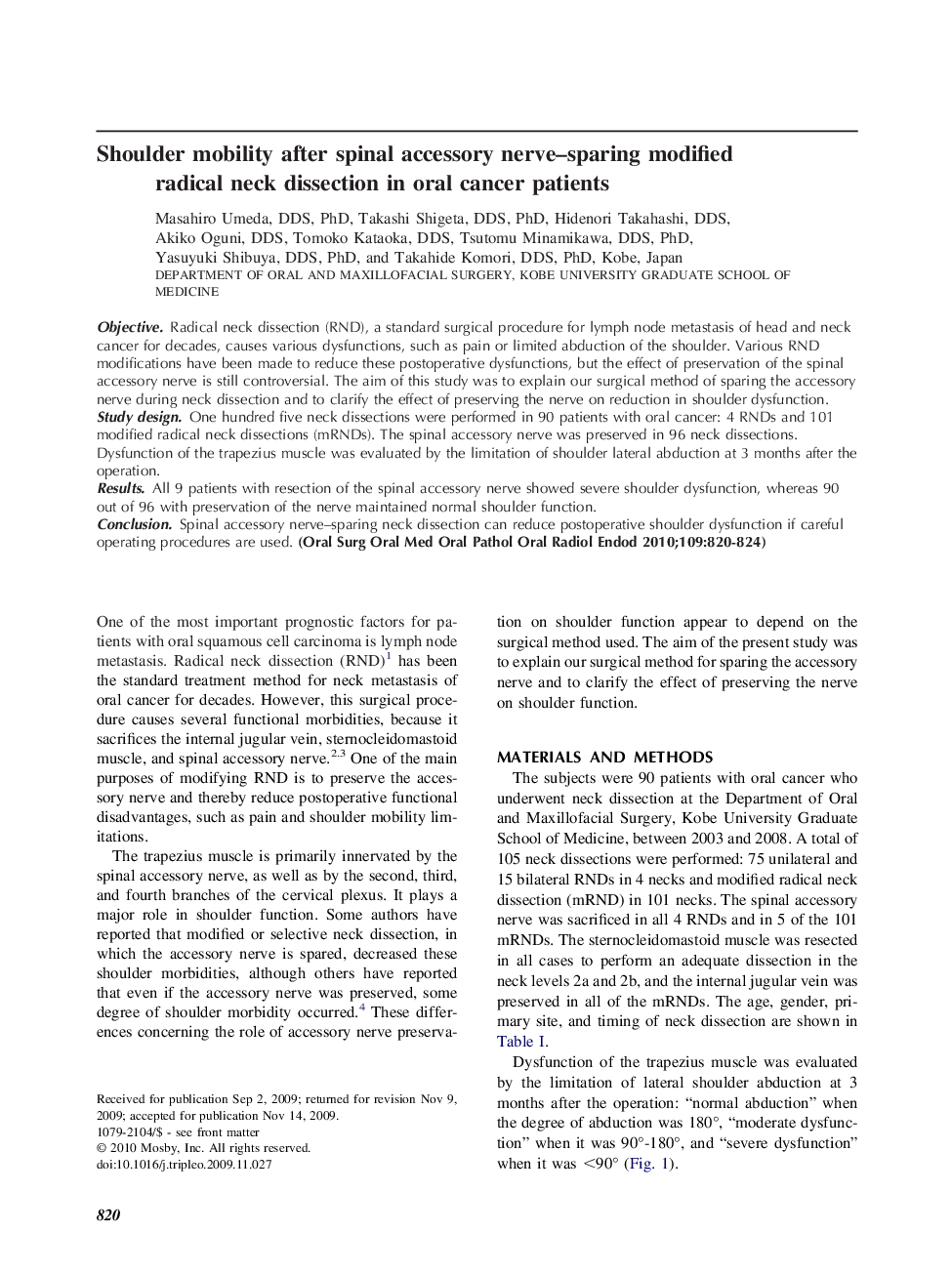| Article ID | Journal | Published Year | Pages | File Type |
|---|---|---|---|---|
| 3167350 | Oral Surgery, Oral Medicine, Oral Pathology, Oral Radiology, and Endodontology | 2010 | 5 Pages |
ObjectiveRadical neck dissection (RND), a standard surgical procedure for lymph node metastasis of head and neck cancer for decades, causes various dysfunctions, such as pain or limited abduction of the shoulder. Various RND modifications have been made to reduce these postoperative dysfunctions, but the effect of preservation of the spinal accessory nerve is still controversial. The aim of this study was to explain our surgical method of sparing the accessory nerve during neck dissection and to clarify the effect of preserving the nerve on reduction in shoulder dysfunction.Study designOne hundred five neck dissections were performed in 90 patients with oral cancer: 4 RNDs and 101 modified radical neck dissections (mRNDs). The spinal accessory nerve was preserved in 96 neck dissections. Dysfunction of the trapezius muscle was evaluated by the limitation of shoulder lateral abduction at 3 months after the operation.ResultsAll 9 patients with resection of the spinal accessory nerve showed severe shoulder dysfunction, whereas 90 out of 96 with preservation of the nerve maintained normal shoulder function.ConclusionSpinal accessory nerve–sparing neck dissection can reduce postoperative shoulder dysfunction if careful operating procedures are used.
